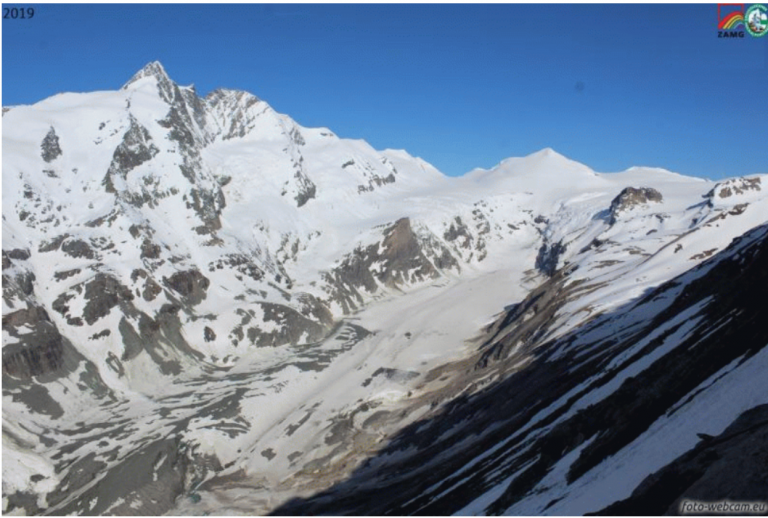Austrian ZAMG national weather service here reports that the “glaciers have recovered” in the Alps due to a “snowy winter”.
Image: foto.webcam.eu
“Strongest growth in 20 years”
ZAMG confirmed that last winter, the glaciers in the Hohe Tauern have grown more strongly than they have for 20 years.
Austria’s ZAMG meteorological institute reminds, however, that the figures that really count are the ones that come in at the end of the summer.
Yet the strong growth over the winter comes as a surprise. The Hohe Tauern glaciers have grown “up to 25%” when compared to an average winter. The growth is equivalent to 2 more than meters of water.
The average snow depth at Goldbergkees was 440 centimetres and at Kleinfleißkees 400 centimetres.
Record June snow height set at the Rudolfshütte
After the measurements in April this year, the cool and humid May caused the snow cover in the high mountains to grow by another 100 to 150 centimetres. Occasionally there were even records. At the ZAMG weather station Rudolfshütte (Hohe Tauern, 2317 meters above sea level) a snow depth of 342 centimeters was measured on June 1, 2019. This is the highest snow height in June at this measuring station. The previous June record here was 310 centimetres, measured on June 4, 1980.






While good news, and inconvenient (for some), when
I hear the term “glacier” – – hard blue ice comes to mind.
https://en.wikipedia.org/wiki/Firn
“Firn (/fɪərn/; from Swiss German firn “last year’s”, cognate with before) is partially compacted névé, a type of snow that has been left over from past seasons and has been recrystallized into a substance denser than névé.
Weight of overlying snow, firn, and ice will, over time, cause the crystals of ice to flatten and produce a blue color:
blue glacial ice
While the notion of a “snowy winter” is true, and total mass of hard H2O has increased, I don’t think the AWA is making the case for hard blue ice.
Oh no, this cannot be seen!!
Get drop cloths, lots of drop cloths, and get these glaciers covered.
“…glaciers in the Hohe Tauern have grown more strongly than they have for 20 years.”
So, have the glaciers also been growing for the last two decades, just not as strongly? That’s what the above implies.
Sounds like glacier growth, in the words of the warmists, is “accelerating,” unlike sea levels which are not, despite their hysterical claims to the contrary.
Because of a snowy winter? No No, it can only be because of climate change.
Politician blind to reality sees a glacier melt a bit in summer, so obviously the economy of the U.K. must be destroyed, or something.
Paul Homewood has a good piece up on the consequences of foolish politicians actions based on their flawed perceptions of reality.
https://notalotofpeopleknowthat.wordpress.com/2019/06/27/theresa-mays-holiday-will-cost-us-dear/
They mistake good for bad. They think they can “fix” a problem that doesn’t exist, and in doing so creat real problems and cause great harm.
Glaciers advancing is BAD!
Glaciers and polar ice receding is GOOD!
If we are truly coming out of the LIA then glaciers and polar ice should recede.
Advancing glacier ice indicates a stall in the long march out of the cold.
It’s just weather. Nothing to see here, move on along.
[…] https://notrickszone.com/2019/06/26/austrian-weather-agency-glaciers-have-recovered-due-to-a-snowy-w… […]
[…] https://notrickszone.com/2019/06/26/austrian-weather-agency-glaciers-have-recovered-due-to-a-snowy-w… […]